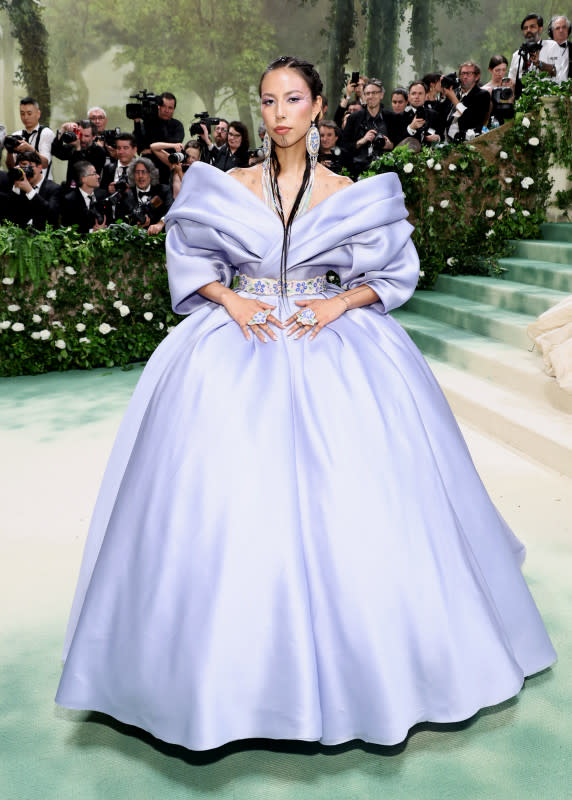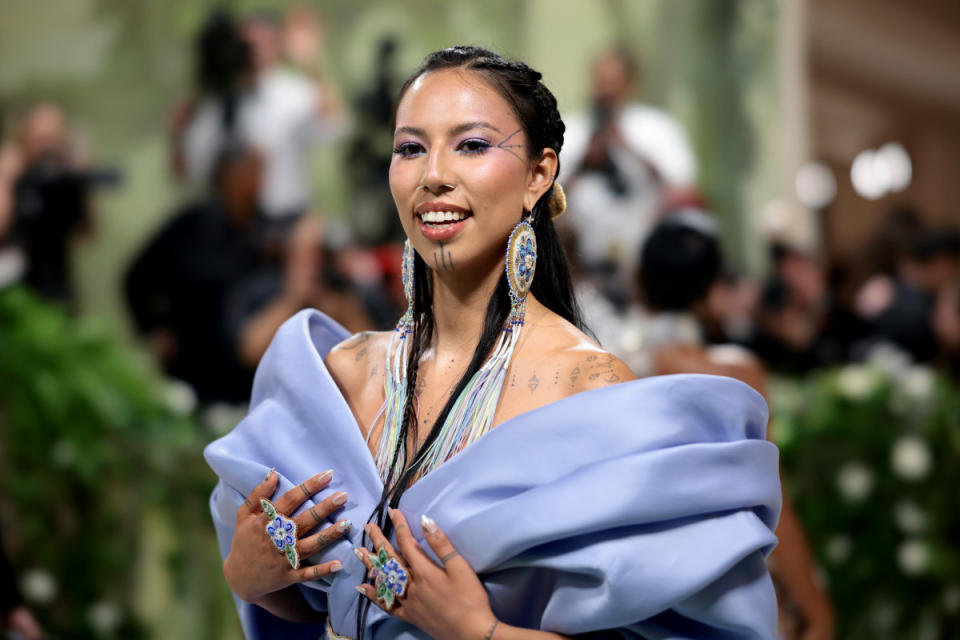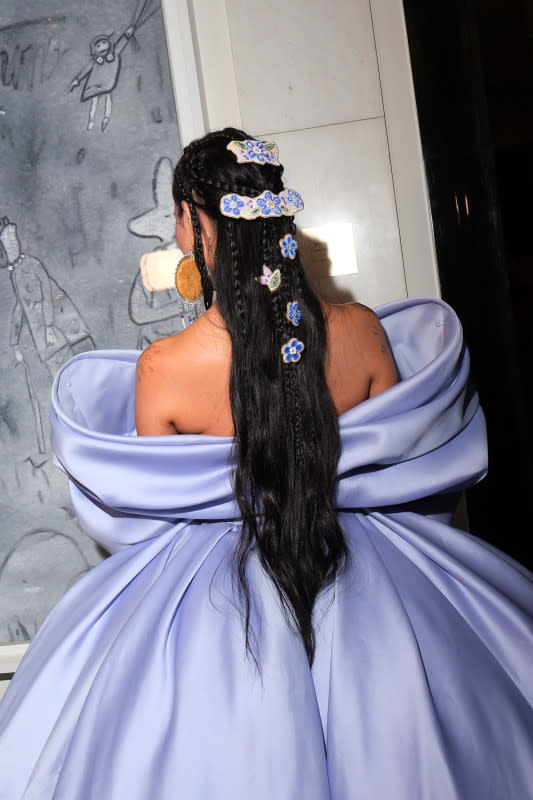Quannah Chasinghorse's H&M Met Gala Gown Incorporates a Rare Alaskan Flower

Photo: Jamie McCarthy/Getty Images
Quannah Chasinghorse decided to go "very femme and ethereal" for her fourth Met Gala appearance this year, stepping onto the carpet in a periwinkle, princess-silhouette gown, made custom by H&M.
The gown is characterized by its distinct outline and iridescent hue. H&M Head of Design Ann-Sofie Johansson tells Fashionista that it's partly based on the brand's archives — a trend this year since the Metropolitan Museum of Art's corresponding exhibit focuses on archival garments (or "sleeping beauties") — as well as Chasinghorse's own life and heritage. The gown is simultaneously attuned to the evening's "Garden of Time" dress code: Its silk-satin gazar gets its color from forget-me-not flowers.
"Living in Alaska, I've probably found between five to 10 forget-me-nots in my entire lifetime. That's how rare they are," Chasinghorse says of the Alaskan state flower. "They are a tiny, delicate flower. They're really low to the ground and are so beautiful and have this pretty blue color. Some grow with an iridescent, purple color. When you find and see them, it's like a rare delicacy."
The gown's voluminous skirt, courtesy of a hefty yardage of tulle crinoline, mimics a flower in bloom. The bodice looks like silken petals. "[The dress] makes me feel like I'm in a Disney princess movie or an ethereal being. We play into that with the hair and makeup, too," she says, adding that it's "giving princess ethereal flower garden fairy."

Photo: Dimitrios Kambouris/Getty Images
Each year, Chasinghorse also works with a different native artist for some aspect of her look. "It's really important to show the world that Native people are not a monolith, and that plays into fashion. Every single tribe had their own hairstyles, had their own regalias, had their own colors and designs," she says. This year, she worked with Heather Dickson, whose tribe is near Chasinghorse's own Alaska-based Hän Gwich'in in the North American region. Both of their tribes practice floral art, so Dickson's work "was a perfect way to fit into the theme and represent my people from the North," Chasinghorse shares.
Johansson and her team began the design process by looking through H&M's archives in the 1947-born company's facility on the outskirts of Stockholm. This is where they found the 1950s-era beaded wedding dress that became the main reference for Chasinghorse's look. Johansson wanted the gown to evoke a sense of "beauty, grace and how old movie stars dressed in the fifties." This gave way to its princess silhouette and soft palette.
"It doesn't really scream. It's more about the beautiful details, the beautiful fabrics and the flower petal shape of the dress," Johansson says, adding that the inner boning and sheer yardage of tulle are important details, even if they're not easily visible. On top of the technical skills and savoir-faire it took for the H&M team to hand-make this gown, Johansson notes that it has a deeper meaning: "being able to embrace beauty and optimism" even if just for a night, especially during trying times where there's so much "horrible news."

Photo: Lanna Apisukh/WWD via Getty Images
"I think it evokes positivity and memories. The colors put you in a positive mood. There's an enchantment in those colors," she adds. "You need that little bit of re-enchantment again, and you need to be able to dream a little again."
This year marks H&M's first time sponsoring a table and dressing an entourage since 2018. (It dressed Laura Harrier in 2022.) Of returning in 2024 with Chasinghorse as well as Adwoa Aboah, Awkwafina, Hari Nef, Paloma Elsesser and Stefon Diggs, Johansson says simply, "We just thought that it's time to be there again. It's such a cultural phenomenon. It's also really fun to be there."
Want the latest fashion industry news first? Sign up for our daily newsletter.


